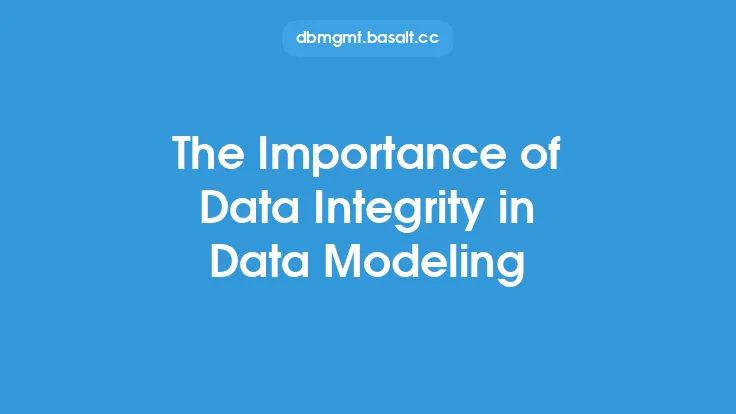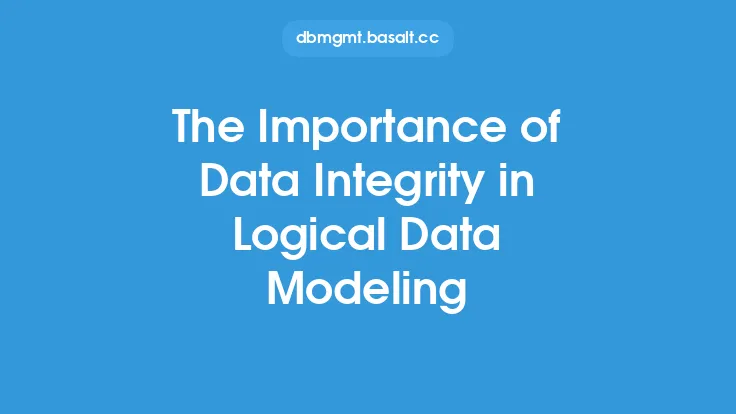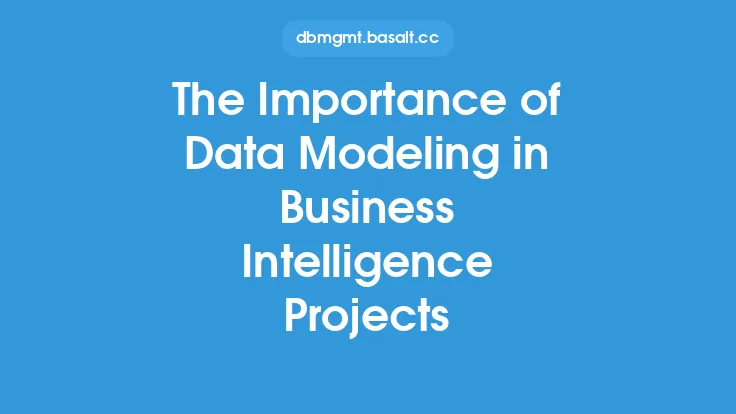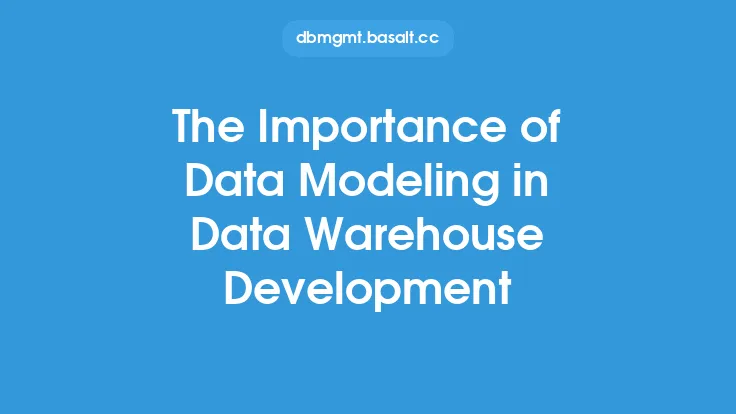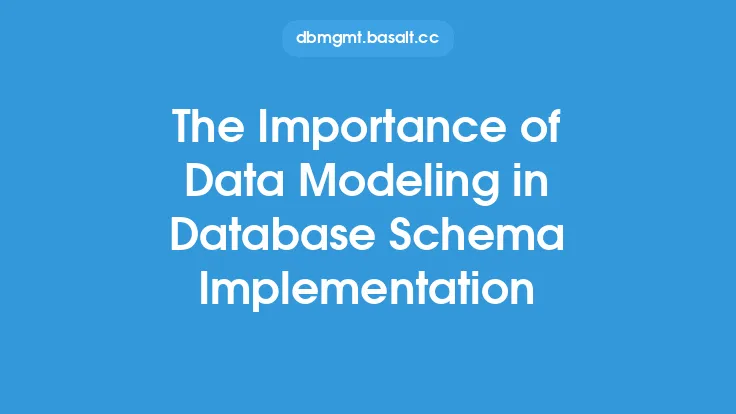Data normalization is a fundamental concept in data modeling that plays a crucial role in ensuring the quality, integrity, and scalability of a database. It is a process of organizing data in a database to minimize data redundancy and dependency, which can lead to data inconsistencies and anomalies. Normalization involves dividing large tables into smaller, more manageable tables, and defining relationships between them. This process helps to eliminate data duplication, reduce data inconsistencies, and improve data integrity.
Introduction to Data Normalization
Data normalization is based on a set of rules, known as normal forms, which are used to measure the level of normalization in a database. The most common normal forms are First Normal Form (1NF), Second Normal Form (2NF), and Third Normal Form (3NF). Each normal form has its own set of rules and constraints that must be satisfied in order to achieve a higher level of normalization. The process of normalization involves analyzing the data and identifying the relationships between different tables and columns. This helps to identify data redundancy and dependency, which can then be eliminated through the normalization process.
Benefits of Data Normalization
Data normalization offers several benefits, including improved data integrity, reduced data redundancy, and improved scalability. By minimizing data redundancy, normalization helps to reduce the risk of data inconsistencies and anomalies. This, in turn, improves data integrity and ensures that the data is accurate and reliable. Normalization also improves scalability by allowing databases to grow and evolve over time without becoming overly complex and unwieldy. Additionally, normalization makes it easier to maintain and update databases, as changes can be made to a single table or column without affecting other parts of the database.
Normal Forms in Data Normalization
There are several normal forms in data normalization, each with its own set of rules and constraints. The most common normal forms are:
- First Normal Form (1NF): This normal form states that each table cell must contain a single value, and that each column must contain only atomic values.
- Second Normal Form (2NF): This normal form states that each non-key attribute in a table must depend on the entire primary key, and not just one part of it.
- Third Normal Form (3NF): This normal form states that if a table is in 2NF, and a non-key attribute depends on another non-key attribute, then it should be moved to a separate table.
- Boyce-Codd Normal Form (BCNF): This normal form states that a table is in BCNF if and only if it is in 3NF, and there are no transitive dependencies.
- Higher Normal Forms: There are several higher normal forms, including Fourth Normal Form (4NF), Fifth Normal Form (5NF), and Sixth Normal Form (6NF), each with its own set of rules and constraints.
Data Normalization Techniques
There are several data normalization techniques that can be used to normalize a database. These include:
- Table splitting: This involves splitting a large table into smaller, more manageable tables, each with its own set of columns and relationships.
- Column splitting: This involves splitting a column into two or more columns, each with its own set of values and relationships.
- Data transformation: This involves transforming data from one format to another, such as converting a string to a date or time.
- Data aggregation: This involves aggregating data from multiple tables or columns into a single table or column.
Challenges and Limitations of Data Normalization
While data normalization offers several benefits, it also has some challenges and limitations. One of the main challenges is that normalization can lead to increased complexity, as the database is divided into smaller, more manageable tables. This can make it more difficult to query and retrieve data, as the relationships between tables must be carefully managed. Additionally, normalization can lead to reduced performance, as the database must perform additional joins and queries to retrieve data. However, these challenges can be mitigated through the use of indexing, caching, and other optimization techniques.
Best Practices for Data Normalization
There are several best practices that can be followed to ensure effective data normalization. These include:
- Analyzing the data: Before normalizing a database, it is essential to analyze the data and identify the relationships between different tables and columns.
- Identifying data redundancy: Data redundancy can lead to data inconsistencies and anomalies, so it is essential to identify and eliminate redundant data.
- Using normal forms: Normal forms provide a set of rules and constraints that can be used to measure the level of normalization in a database.
- Testing and validating: After normalizing a database, it is essential to test and validate the data to ensure that it is accurate and reliable.
- Documenting and maintaining: Finally, it is essential to document and maintain the normalized database, to ensure that it continues to meet the needs of the organization over time.
Conclusion
Data normalization is a critical component of data modeling, as it helps to ensure the quality, integrity, and scalability of a database. By minimizing data redundancy and dependency, normalization helps to reduce the risk of data inconsistencies and anomalies, and improves data integrity. While normalization can lead to increased complexity and reduced performance, these challenges can be mitigated through the use of indexing, caching, and other optimization techniques. By following best practices and using normal forms, organizations can ensure effective data normalization and improve the overall quality of their databases.
